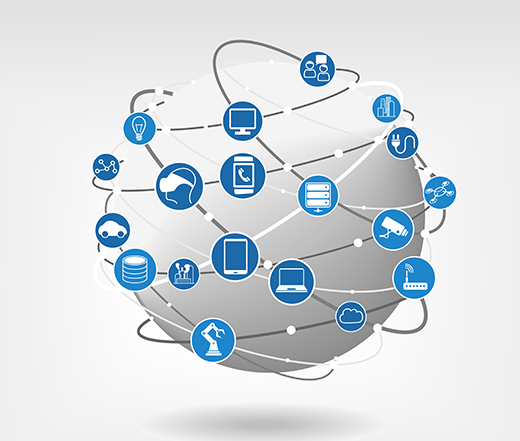How IIoT is Revolutionizing Water Utilities
Published on by WTP Operations Manager, Employee at Jobs and Scholarships in Business
James Gillespie writes for Tech Crunch how The Industrial Internet of Things (IIoT) is creating huge opportunities in the water and wastewater industries, adding value to both the utility and the consumer.

Connected machines are reshaping the way these utilities operate, allowing them to make smarter and more informed decisions. By driving up innovation, water utilities are driving down cost. Here’s what they’re up to.
Treating water and wastewater requires chemical processes that can now be monitored more accurately using digital data collection. These digital transformations are taking the guesswork out of chemical processing and allow utilities to optimize the amount of chlorine dollars spent to maintain safe levels — saving time, money and empowering operators to make fewer mistakes.
Another IIoT development, a new SaaS application that’s set to launch later this month, will calculate wastewater clarifier tank performance — providing quick analysis on a critical step in the wastewater process. The tool, called ClariFind, alerts utilities as they’re getting close to a failure before they experience it. ClariFind will predict when sludge will overflow and be released.
This kind of problem causes EPA issues and fines that can run in the millions of dollars. It will also be able to predict a thickening failure, which is when the effluent doesn’t settle correctly and creates a costly sludge blanket in the tank. ClariFind is just one part of a water operations suite of productivity enhancers — solutions as a service.
Predictive analytics are also solving monitoring problems that were not previously possible for utilities. For example, there are a large number of pumps that are commonly found within water facilities, and digitized data is making it possible for companies to accurately predict when these pumps might fail — ahead of time.
 It’s similar to the predictive analytic technology used in jet engine checks between airline flights.
It’s similar to the predictive analytic technology used in jet engine checks between airline flights.
This cloud-based application easily connects to pumps and helps companies avoid costly and inconvenient failures, allowing engineers to schedule controlled maintenance rather than reactive maintenance.
Concepts are in the works to apply this type of predictive technology to residential properties as well, in order to help homeowners and property managers predict sump pump failures, for instance, before the basement floods.
This technology will be a must-have asset for seasonal homes that don’t have inhabitants year-round. Utilities are leading the way in pilot stages for this type of residential technology.
Safety procedures are also being monitored and enforced more closely by keeping track of them using digitized technology. In Florida, the water division of the Orlando Utilities Commission is using IIoT technology to remind employees of protocol procedures when dangerous chlorine leaks are detected. The safety procedure is sent to a worker’s device to be confirmed before access to the contaminated area is granted.
Both private companies and government agencies are utilizing IIoT technology to increase efficiency and profitability in water. GE has launched an industrial platform called Predix, a cloud-based platform as a service (PaaS) that enables asset performance management on an industrial scale. For water utilities, Predix will help utilities organize time-series data to monitor asset functionality.
Partnerships between technology companies and utility companies are facilitating innovation and developing solutions to become cleaner and more efficient at a rapid pace. It truly is a transformative time in the industry, and the results couldn’t be more pure — better drinking water for everyone.
Blog by James Gillespie
Read full blog: Tech Crunch
Media
Taxonomy
- Technology
- Integrated Water Management
- Water Utility
- Monitoring & Control
- Water Management
- Utility Management
- Water Software
- Monitoring Technology
- Internet
- Software Solutions
- Data Management
- Software
- Wi-Fi Technology
- Data
1 Comment
-
is there a case study publicly available? i'm very interested in continuous monitoring and remote data collection.